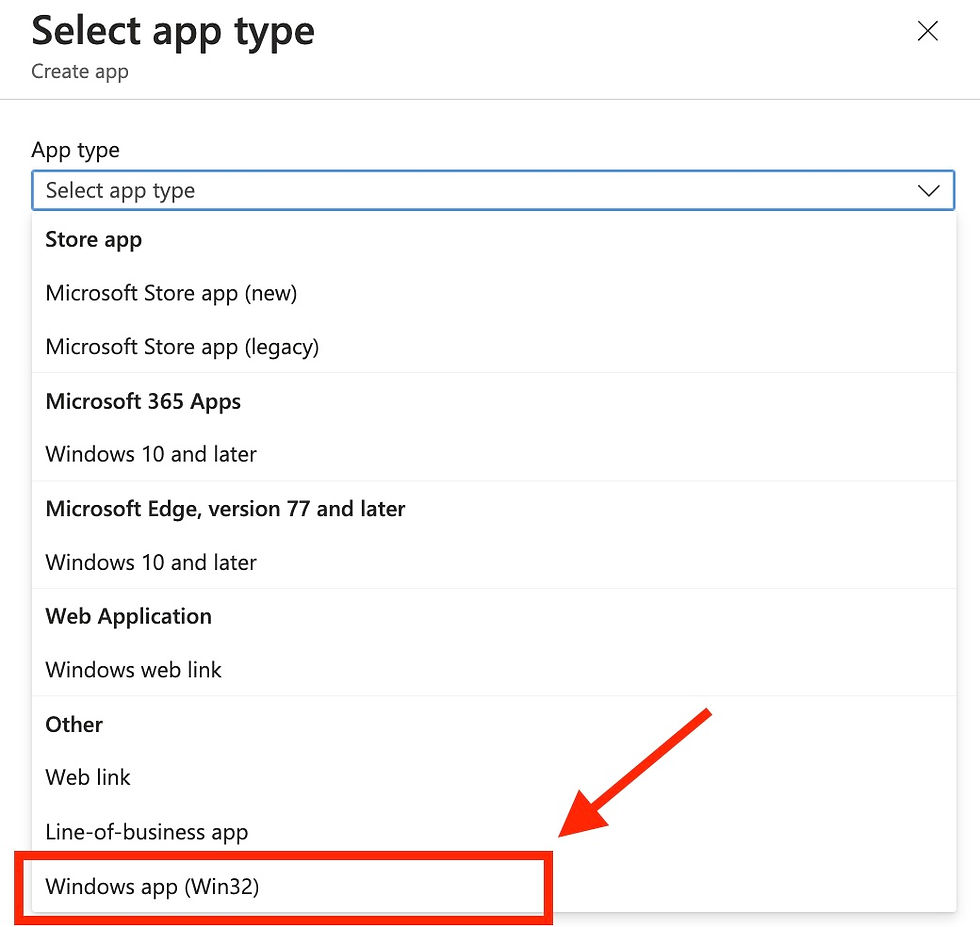Deploying EXE Applications Using Intune (Multiple Options)
- Gareth Oxendine

- May 14, 2024
- 2 min read
Updated: May 15

Introduction
Before we learn the different options available for deploying EXE applications to Windows devices, remember that there are two primary types of app installers for Windows: EXE and MSI. With Intune, you can deploy both of these in addition to Windows Store apps. In this blog post, however, we'll focus on the different options for deploying EXE apps.
Table of Contents
Option 1: Convert the EXE to a Win32 App
Option 1: Convert the EXE to a Win32 App
As you can see in the picture below, Intune does not have an option to upload EXE files. They do, however, have a Win32 app option, allowing us to upload Win32 apps with the .intunewin file extension. To convert an .exe installer file to an .intunwin file, you use the Win32 Content Prep Tool. Click the link below to learn how to deploy Win32 apps using Intune:

Option 2: Deploy a PowerShell Script
You can also use Intune and a PowerShell script to deploy and execute an .exe installer file.
NOTE: |
When using a script, you must deploy the .exe file to the machine or place it on an accessible file share. If deploying the file to each machine, there are a few methods. One is to use the Invoke-URI command and download the file from an Azure blob container or a public file share service such as Box or OneDrive. Another option is to use the Copy-Item command and copy the file from an on-premises file share. |
In the example script below, I used the Copy-Item command to copy the .exe file from an on-premises file share.
Once you've written and saved the PowerShell script, you can upload it to Intune.

Open the Intune portal.
Select Devices in the left-hand menu blade then select Windows.
Select Scripts and remediations then select the Platform Scripts tab.
Select + Add .
To learn more about deploying PowerShell scripts, click the link below:
Option 3: Use Winget
Winget is a command-line tool provided by Microsoft that allows you to install, uninstall, and update applications. To learn more about this tool and how to use it to deploy applications, click the link below:
Cover picture provided by Freepik

Comments